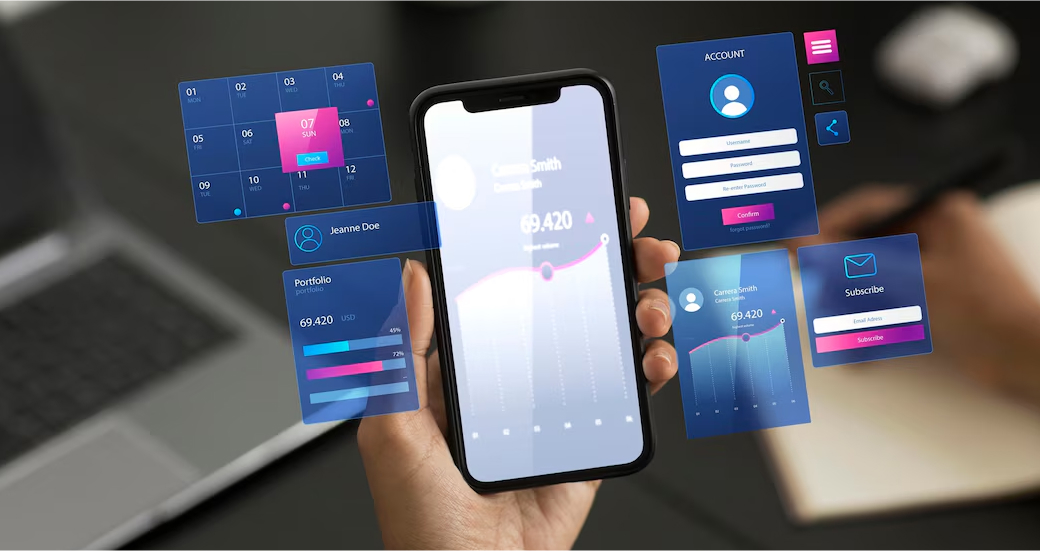This post will cover one of the essential types of Testing: User-interface Testing.

Businesses rely primarily on their websites or mobile applications today. Processing orders, transactions, and client interactions are the focal points of many business models. Consistently keeping your user in mind is the key to accomplishing that.
Let’s begin with a query. What is the first element a user engages with while visiting a website? Of course, the UI. The first thing that leaves a “First Impression” on users is the website’s appearance and experience. UI testing is becoming more popular since a user’s experience with an interactive web application could make or break a business.
Over the past ten years, the importance of user interface testing has increased substantially. As the number of rivals in our market increases, we must continue to be inventive and offer the best user experience for our users. The online application also has many other elements, which can be challenging.
It is essential to simplify and improve the usability of this process for this reason. If not, users may stop using your application out of frustration with its complexity. Due to this, UI, or User Interface, and UI acceptability testing, have grown to be quite significant.
But why is it necessary to conduct UI testing?
A crucial step in the software testing cycle is User Interface (UI) testing. QA experts should evaluate all interface elements to confirm that programs have the intended functions and are user-friendly. It raises the caliber of the software and guarantees that users will find the application comfortable to use.
User interfaces are the parts of websites and applications that customers use. The user interface’s performance inextricably shapes the user’s first and last impressions of a website or app. Because UI design and functionality are so important, developers and testers have emphasized UI testing as a key step in the development process.
The demands for user experience keep expanding as each website or app interacts with an increasing number of rivals in their field. Thorough UI testing is the only way to ensure that all of your features will work as planned and meet these requirements. The effectiveness of the visual and auditory components of a website or app is also assessed through user interface testing.
This article offers a comprehensive introduction to UI testing, especially for beginners. Find out what UI testing is, why it matters, and how to use it in testing settings.
What is UI Testing?
It’s time to give UI testing a definition that goes beyond the bare minimum. What exactly does UI testing entail? What are the key objectives that individuals attempt to accomplish with it? The answers to these questions are provided below.
One of the most important components of UI testing is Usability. User interface testing ensures an app’s user interface works as planned and provides users with the resources they need to make the most of it. To put it another way, user interface testing is a technique for evaluating software components that users will interact with. It usually involves assessing the visual features to ensure they work and meet the requirements.
It entails checking all graphical icons and visual cues, such as toolbars, radio buttons, menus, checkboxes, text boxes, and more. UI testing can be done manually or automatically using a testing tool. The objective is to ensure that every UI element complies with the stated requirements, regardless of the technique utilized.
Websites incorporate web elements produced with CSS, JavaScript, and other programming languages. UI testing runs tests and asserts about these features to make sure they are reliable. The website’s exterior design and layout are more likely to be of interest to users and are examined in greater detail than its internal structure.
User interface test suites often include the following features:
- Functionality
- Performance
- Compliance
- Visual Design
- Usability
What is the Scope of UI Testing
The following are a few crucial test cases that UI testing typically validates:
- Errors in Data Type: Confirms that only accurate data, such as dates, currencies, and similar entities, can be entered in certain data fields.
- Progress Bars: Verifies that a progress bar is displayed to inform the user that the page is loading when showing pages or screens that take some time to load completely.
- Field Widths: Ensures that users cannot enter data in some text boxes that exceed the maximum length.
- Working Shortcuts: Assures that across browsers, operating systems, and devices, keyboard shortcuts in the supported program work as intended.
- Elements Used for Navigating: Verifies that all navigational buttons are operational and lead users to the desired location.
- Error Logging: Guarantees that errors are recorded to a log file in case of a system failure.
- Table Scrolling: The user should be able to scroll over the data while the headers stay in place if a website employs data tables that take up more than one page.
- Type-ahead: It is necessary if the user interface uses drop-down menus. When selecting from a list of possibilities, the user should only type the initial letter to narrow the list to the appropriate choice. A bad user experience is one in which the user has to go through a long list.
- Menu Items: Authenticates that the software is set up only to use the menu options at the specified location.
Approaches for Testing User Interfaces: Manual or Automated?
UI tests can be carried out manually or automatically. Testers can use one technique or employ both depending on the team’s necessities and the application type.
-
Manual Testing
In this testing approach, a tester manually uses all the website’s or app’s capabilities to look for errors. It makes sense if the product has a few UI components, typically for early iterations of a website or app. But today’s tech-savvy user base expects software with sophisticated, layered user interfaces that include hundreds or even thousands of UI elements that need to be verified.
As a result, manual testing is ineffective, time-consuming, and prone to mistakes made by humans. Consider how frequently a user would need to manually enter data into a page with more than ten input fields if the page required to be tested with various sets of values.
-
Automated Testing
Any method that enables the execution of your tests without a human’s involvement is called automated testing. Manual testing has been the norm in the past. A person performs a series of actions to determine whether events are behaving as predicted. An automated test, in contrast, needs to be built once and can be executed whenever you need it.
Furthermore, automated testing is immune to human fatigue and error. Test results will be accurate if the proper tools are in place and test scripts are prepared correctly. Frameworks for test automation are frequently configured to automatically record results and distribute them to the team after tests are finished. In the case of manual testing, the team is required to not only run the tests but also extract the results, compile them into reports, and distribute them to the responsible authorities. Once more, this puts a strain on their time and energy.
Automated testing using Selenium is often the most effective and efficient approach for testing user interfaces. The significance of testing across browsers cannot be emphasized when it comes to testing across browsers. The program must be usable on various devices, operating systems, and browsers. Instead of exhausting yourself manually on multiple devices and browsers, create test scenarios that can execute UI tests automatically.
Top 7 Benefits of Automated UI Testing
The testing team benefits from using automated tools or software in the testing process in several ways, including the following:
-
Speed
Speed is by far the most crucial factor. Every business relies heavily on time, which can be significantly reduced by automating web UI testing. Selenium Automation testing for UI acceptance testing necessitates that we create the tests only once and run them repeatedly, unassisted, with various situations and values.
-
Saves Time
It is inefficient to manually run the same UI flow tests whenever an update is sent, or changes are made, especially for regression testing. Automating this process guarantees that QA testers or developers are given back time to focus on other unique duties. Continuous testing during development will enable you to launch your product sooner because it will take less time. Automation testing technologies can also produce test results more quickly, hastening the validation of the finished software.
-
Accuracy
The primary drawback of manual testing for UI acceptability testing is that it is subject to human mistakes. Test execution will almost always be accurate with automation. Test automation reduces errors while enabling tasks like pixel-perfect visual testing. If the tests are written properly, Selenium Automation testing for UI acceptance testing aids in the error-free execution of tests.
-
Transparency
Automated web UI testing also makes it simpler to generate reports quickly and distribute them to the team after testing is complete. Conversely, manual testing requires more time because results must be manually extracted and reported before reports may be generated manually or through software.
-
Faster Feedback Time
QA teams can quickly perform tests on several devices by automating UI tests. It ensures that the developers receive test results rapidly, giving them time to make any necessary adjustments and get the code back to the testing team as soon as feasible.
-
Expanded Protections
The disadvantage of manual testing is that each tester can only conduct one test on one platform at a time. Automating user interface tests enhances test coverage over manual testing by executing more tests concurrently on more platforms and devices.
-
Quicker Detection of Bugs
Integrating UI test automation tools supports issue tracking programs like Bugzilla, Mantis, JIRA, and Quality Center. This connection makes it simple to record problems in any bug tracking application, making it simple to track them. Automation of UI tests allows for the early detection and correction of issues. Depending on the configuration, automated tests may run before, during, or after the build.
Takeaways
Businesses should use automated UI testing for the web as a crucial testing procedure to understand the functionality of various web app UI components. Additionally, this web UI automation testing greatly decreases the need for regression testing. But, there are certain challenges concerning web UI automation testing that testers should handle effectively. Handling these challenges helps evolve an effective, user-friendly website and web app that delivers great UI and UX to end-users. Therefore, automated Web UI testing should be used to create an efficient web application that gives end users a high level of pleasure.
Streamline Your UI Automation With Saffron Tech
As you can see, this year is seeing the emergence of numerous exciting UI design concepts. To create simple yet engaging websites that excite consumers with novel experiences, you must stay on top of them. But you must also carefully strike a balance between being on trend and providing a wonderful user experience. It will make you stand out. In this instance, research and testing are included.
As lifelong learners, we at Saffron Tech are always reinventing ourselves to set trends in the testing industry. We adhere to skillful growth processes and can provide strong, conclusive services. To build welcoming, understandable, and enjoyable experiences, Saffron Tech employs a broad team of skilled engineers, designers, and analysts. We deeply examine your target market’s patterns, desires, requirements, and obstacles using our unique blend of investigative and co-creative methodologies to select the best course of action for pleasing your clients.



